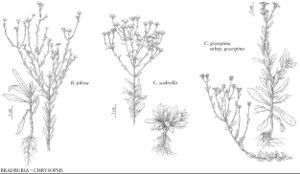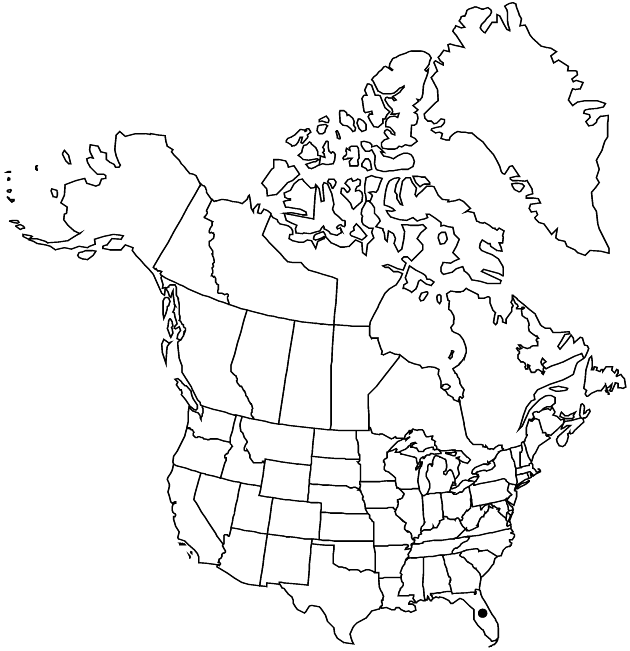Difference between revisions of "Chrysopsis scabrella"
Fl. N. Amer. 2: 255. 1842.
imported>Volume Importer |
imported>Volume Importer |
||
| Line 62: | Line 62: | ||
|publication year=1842 | |publication year=1842 | ||
|special status=Illustrated;Endemic | |special status=Illustrated;Endemic | ||
| − | |source xml=https:// | + | |source xml=https://bitbucket.org/aafc-mbb/fna-data-curation/src/2e0870ddd59836b60bcf96646a41e87ea5a5943a/coarse_grained_fna_xml/V19-20-21/V20_478.xml |
|tribe=Asteraceae tribe Astereae | |tribe=Asteraceae tribe Astereae | ||
|genus=Chrysopsis | |genus=Chrysopsis | ||
Latest revision as of 20:03, 5 November 2020
Biennials, 40–100 cm; taprooted. Stems usually 1 (from rosette), erect (ascending if more than 1), simple, proximally woolly, mid to distally stipitate-glandular (tips erect to ascending before heads form). Leaves sessile; basal blades oblanceolate to obovate, 40–100 × 10–20 mm, bases tapering, margins apically dentate-serrate, faces densely woolly, often matted; cauline blades linear, linear-elliptic, elliptic to linear-lanceolate, or lanceolate, reduced distally, apices usually acute, rarely obtuse, faces glabrate to sparsely strigillose (hairs 0.3–0.6 mm), densely short-stipitate-glandular (larger glandular hairs 0.01–0.3 mm), proximal and mid cauline rarely woolly. Heads 10–100 in compact to lax, corymbiform arrays (less than 1/3 plant height). Peduncles 2–10 cm, stipitate-glandular (glands 0.05–0.2 mm); bracteoles 1–3, oblong to linear distally, faces short-stipitate-glandular. Involucres (green in bud) campanulate, 6–9 mm. Phyllaries in 4–5 series, erect, linear-lanceolate, strongly unequal, 0.7–1.1 mm wide, apices usually acute, sometimes acuminate, rarely aristate, faces densely short-stipitate-glandular. Ray florets 19–32; laminae 6–8 × 1.5–2.5 mm. Disc florets 35–50; corollas 5–7 mm, lobes 0.5–1 mm. Cypselae 2–3 mm, without ridges, shallowly ribbed, faces sparsely to moderately long-strigose; pappi in 3 series, outer of linear scales 0.5–1 mm, inner of 25–35 bristles 5–7 mm, primary weakly to moderately clavate. 2n = 10.
Phenology: Flowering Aug–Nov (rarely spring).
Habitat: Open sandy grounds, white sand hills, pine and oak scrubs, open flatwoods, fields, roadsides
Elevation: 0–50 m
Discussion
Chrysopsis scabrella is found on the peninsula and the extreme eastern panhandle.
Selected References
None.

